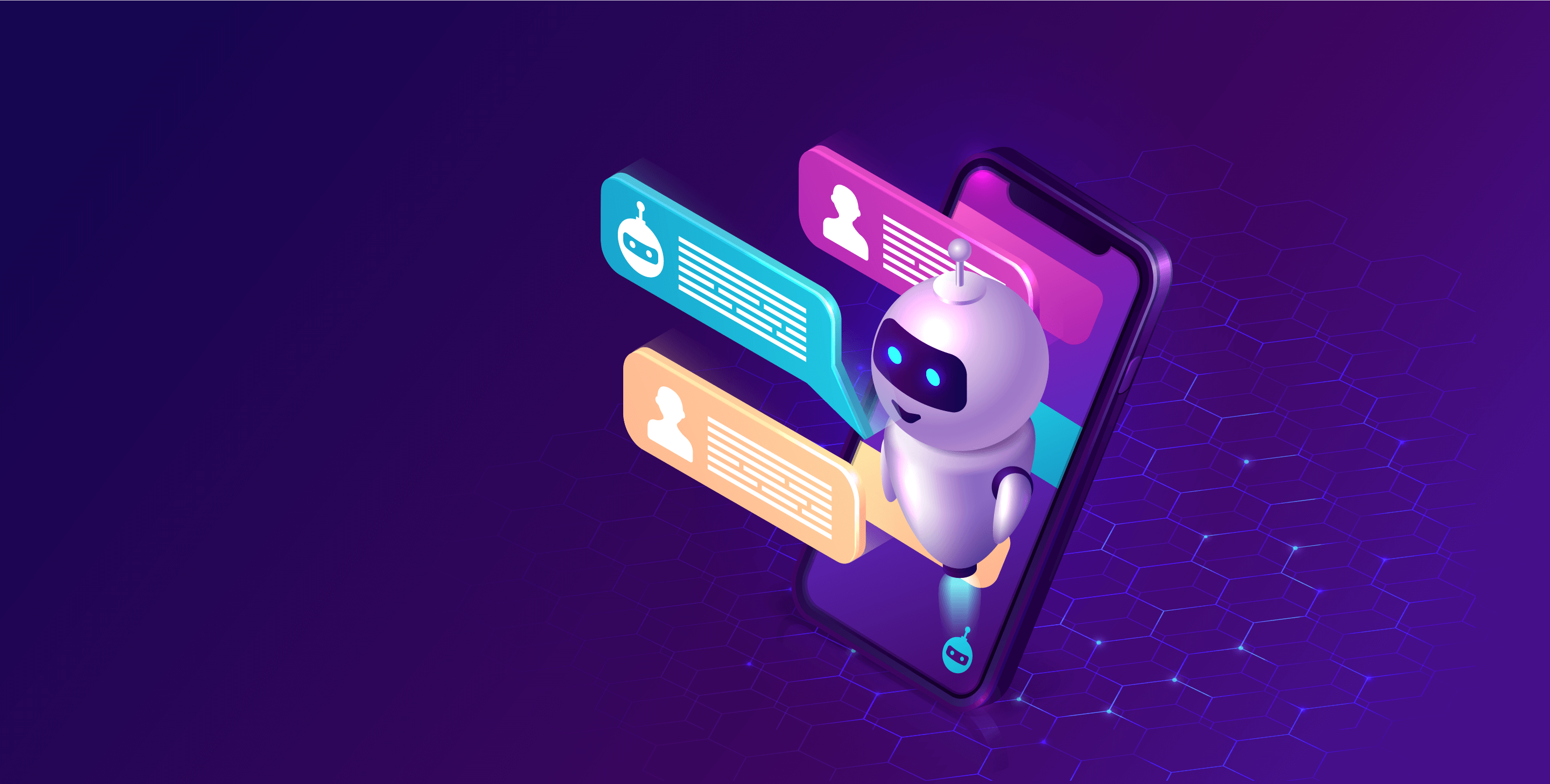The landscape of customer service has undergone a seismic shift in recent years, propelled by the relentless march of technological innovation. At the heart of this transformation lies the integration of automation technologies, most notably chatbots, which are redefining the paradigms of customer interactions.
Gone are the days when customer service was synonymous with long wait times and repetitive, often frustrating, interactions. Today, customer service automation stands as a beacon of efficiency, accessibility, and personalization, heralding a new era where customer satisfaction is not just a goal but a guarantee.

Table of Contents
Why Customer Service Automation?
The Need for Efficiency and Scalability in Customer Service
In an era defined by instant gratification, businesses are under constant pressure to deliver quick and accurate responses to customer inquiries. Automation, through chatbots, offers a solution to this challenge, enabling companies to handle an increasing volume of requests without compromising on quality.
This scalability is crucial in managing the ebb and flow of customer service demands, ensuring that every customer receives timely and relevant assistance.
Benefits of Automating Customer Service Processes
The advantages of integrating automation into customer service are manifold. Firstly, it significantly reduces response times, ensuring that customers are not left waiting for the help they need.
Additionally, automation allows for 24/7 service availability, breaking down the constraints of time zones and working hours.
Perhaps most importantly, customer service automation can lead to substantial cost savings for businesses, as chatbots can handle an infinite number of interactions simultaneously, reducing the need for a large human customer service team.
The Rise of Chatbot Technology
Defining Chatbots and Their Functionality
Chatbots, at their core, are software applications designed to simulate conversation with human users, especially over the internet.
They range from simple, rule-based systems that respond to specific commands with pre-defined responses, to advanced AI-powered platforms capable of understanding natural language and learning from interactions to improve their responses over time.
The essence of chatbot technology lies in its ability to provide instantaneous, on-demand customer service, making it an invaluable asset in the modern business toolkit.
Historical Perspective on Chatbot Development
The genesis of chatbots can be traced back to the mid-20th century, with early experiments like ELIZA and PARRY laying the groundwork for natural language processing.
However, it wasn’t until the advent of more sophisticated artificial intelligence and machine learning algorithms that chatbots truly began to flourish.
Today, chatbot technology has evolved to incorporate complex conversational capabilities, enabling these digital assistants to handle a wide array of customer service tasks with unprecedented efficiency.
How Chatbots are Changing the Game
Instantaneous Response Times
In today’s fast-paced world, one of the primary customer expectations is immediate attention to their queries and concerns.
Chatbots, with their ability to respond in real-time, have set a new standard in meeting this expectation.
Unlike human agents, who can manage only one conversation at a time, chatbots can engage with countless customers simultaneously, eliminating wait times and significantly improving customer satisfaction.

24/7 Availability
Another game-changing advantage of chatbots is their constant availability. They ensure that customer service is not constrained by business hours, weekends, or holidays.
This round-the-clock service capability means that no matter when a customer decides to reach out, they can expect a prompt response, making it a perfect fit for global businesses catering to customers across different time zones.
Personalization at Scale
Perhaps one of the most compelling aspects of chatbot technology is its ability to personalize interactions at scale. Through the analysis of customer data and previous interactions, chatbots can offer tailored recommendations, solutions, and even anticipate customer needs before they are explicitly stated.
This level of personalization, once only achievable through human agents, is now being replicated by chatbots, enhancing the customer experience and fostering loyalty.
Types of Chatbots in Customer Service
- Rule-based chatbots operate on a predefined set of rules and can only respond to specific commands or questions. They are ideal for handling straightforward, routine tasks where the customer’s queries fall within a predictable range. While their inability to handle complex requests is a limitation, their simplicity and ease of implementation make them a valuable tool for many businesses.
- AI-powered chatbots utilize natural language processing (NLP) and machine learning to understand and respond to a wide variety of customer queries. These chatbots learn from each interaction, becoming more sophisticated and better equipped to manage complex conversations over time. AI chatbots represent the cutting edge of customer service automation, offering a level of interaction that closely mirrors human conversation.
- Hybrid chatbots combine the best of both worlds, incorporating both rule-based and AI components. They can handle routine queries with the efficiency and reliability of rule-based systems while also being capable of escalating more complex issues to the AI component or even a human agent. This model offers a balanced approach, ensuring efficiency without sacrificing the quality of customer service.
Key Features of Effective Chatbot Systems
Natural Language Processing (NLP)
The ability of a chatbot to understand and process human language as it is spoken or written is crucial. NLP allows chatbots to interpret the intent behind customer queries, enabling them to provide relevant and accurate responses. This technology is what enables chatbots to engage in more natural, conversational interactions with users.
Machine Learning and AI Capabilities
The integration of machine learning and AI allows chatbots to learn from past interactions, continuously improving their accuracy and efficiency. Over time, these systems can identify patterns in data, anticipate customer needs, and personalize interactions, thereby enhancing the overall customer experience.
Integration Capabilities with Other Systems and Platforms
For chatbots to truly revolutionize customer service, they must be able to integrate seamlessly with a business’s existing IT infrastructure.
This includes CRM systems, databases, and other digital platforms. Such integration enables chatbots to access and leverage customer data, making their interactions more relevant and personalized.
Chatbots in Action: Real-World Examples
The adoption of chatbot technology across various industries has been transformative, offering insights into its potential to revolutionize customer service. Here are a few examples:
- E-commerce: Major online retailers use chatbots to assist customers in finding products, answering FAQs, and tracking orders, significantly enhancing the shopping experience.
- Banking and Finance: Financial institutions deploy chatbots for services like account inquiries, transaction processing, and even financial advice, providing customers with quick and secure access to information.
- Healthcare: Chatbots in healthcare can schedule appointments, provide medication reminders, and offer basic health advice, improving accessibility and patient care.
These examples underscore the versatility and effectiveness of chatbots in improving customer service, streamlining operations, and even contributing to revenue growth.
Overcoming Challenges in Implementing Chatbots
Addressing Privacy and Security Concerns
As chatbots handle increasing amounts of sensitive customer data, ensuring privacy and security becomes paramount. Employing advanced encryption methods and adhering to data protection regulations can mitigate these concerns, fostering trust between customers and businesses.

Ensuring Chatbots Understand and Process Human Emotions Accurately
One of the more significant challenges facing chatbots is the ability to interpret and respond to human emotions effectively. Advances in AI and NLP are gradually improving chatbots’ emotional intelligence, making interactions feel more natural and empathetic.
Integration Challenges with Existing IT Infrastructure
Successfully integrating chatbots with existing IT systems requires careful planning and execution. Businesses must ensure compatibility and seamless communication between chatbots and their broader IT ecosystem to fully leverage the benefits of automation.
Best Practices for Deploying Chatbots
Understanding Customer Needs and Preferences
- Understanding Customer Needs and Preferences: Before implementing a chatbot, it’s crucial to have a deep understanding of your customers’ needs and preferences. This knowledge will guide the design and functionality of your chatbot, ensuring it meets users’ expectations and enhances their experience.
- Continuous Learning and Improvement: Deploying a chatbot isn’t a set-it-and-forget-it solution. Continuous monitoring, analysis, and refinement based on customer interactions are essential. This iterative process ensures the chatbot remains effective, relevant, and improves over time.
- Importance of Human Oversight: While chatbots can handle a vast array of customer service tasks, human oversight remains crucial. Ensuring there are processes in place for chatbots to escalate complex or sensitive issues to human agents is vital for maintaining high-quality service.
The Impact of Chatbot Technology on the Workforce
Augmenting Human Customer Service Representatives
The advent of chatbots in customer service doesn’t spell the end for human agents. Instead, chatbots can take over routine, time-consuming tasks, allowing human agents to focus on more complex, high-value interactions.
This symbiotic relationship between humans and AI can lead to more fulfilling work for employees and improved service for customers.
Skills Shift and Training Needs for the Future Workforce
As chatbots become more prevalent, the skillset required for customer service professionals is shifting. There’s a growing need for skills in AI management, data analysis, and emotional intelligence. Businesses must invest in training and development to equip their workforce for these evolving roles.
Measuring the Success of Chatbots in Customer Service
Key Performance Indicators (KPIs) and Metrics
To assess the effectiveness of chatbots, businesses should track metrics such as resolution time, customer satisfaction scores, and the rate of successful interactions versus escalations to human agents. These indicators can provide valuable insights into the chatbot’s performance and areas for improvement.
Customer Feedback and Satisfaction Surveys
Direct feedback from customers can offer a wealth of information about the chatbot’s impact. Regularly soliciting and analyzing customer feedback can help businesses fine-tune their chatbot’s responses, functionality, and overall user experience.
ROI Analysis
Evaluating the return on investment (ROI) of chatbot technology is essential. This analysis should consider cost savings from reduced staffing needs, increased efficiency, and any revenue growth attributable to improved customer service.
Other Types of Automation in Customer Service
While chatbots represent a significant leap forward in customer service automation, they are just one piece of a larger puzzle. The drive to enhance efficiency, reduce costs, and improve customer satisfaction has led to the adoption of various other automation technologies. Here’s a look at a few that are making waves:
- Automated Ticketing Systems: Automated ticketing systems streamline the process of managing customer inquiries and service requests. By automatically creating, categorizing, and assigning tickets based on predefined rules, these systems ensure that customer issues are addressed promptly and efficiently, reducing response times and increasing resolution rates.
- Self-Service Portals: Self-service portals empower customers by giving them direct access to information and resources they need to solve their problems without human intervention. From FAQs and how-to guides to interactive forums and video tutorials, self-service portals are an effective way to enhance customer autonomy and satisfaction.
- Automated Email Responses and Marketing Campaigns: Leveraging automation in email communications allows businesses to send timely, personalized responses to customer inquiries and targeted marketing messages. This not only improves engagement rates but also ensures customers receive relevant information and offers, enhancing their overall experience with the brand.
- Virtual Assistants Beyond Chatbots: Beyond text-based chatbots, virtual assistants leveraging voice recognition technology offer a more intuitive way for customers to interact with services. These assistants can perform a range of tasks, from answering queries to executing commands, all through natural language voice commands.
- Workflow Automation: Workflow automation tools help in the seamless orchestration of tasks and processes within customer service operations. By automating routine tasks, businesses can ensure that their teams focus on more complex, value-added activities, thereby improving productivity and service quality.
Ethical Considerations and Customer Trust
Workflow Automation
It’s important for businesses to be transparent about the use of chatbots in customer service. Customers should know when they are interacting with a chatbot and have the option to speak with a human agent if preferred.

Ethical Use of Data and AI
The ethical use of customer data and AI is a cornerstone of trust in chatbot technology. Businesses must ensure they are using data responsibly, protecting customer privacy, and adhering to all relevant regulations and ethical guidelines.
Chatbots and automation are revolutionizing customer service by offering unprecedented efficiency, scalability, and personalization.
However, the successful implementation of these technologies requires careful consideration of customer needs, continuous improvement, and a balanced approach to human and AI collaboration.
As we look to the future, the integration of chatbots into customer service workflows promises not only to enhance customer experiences but also to redefine the role of customer service in the digital age.
